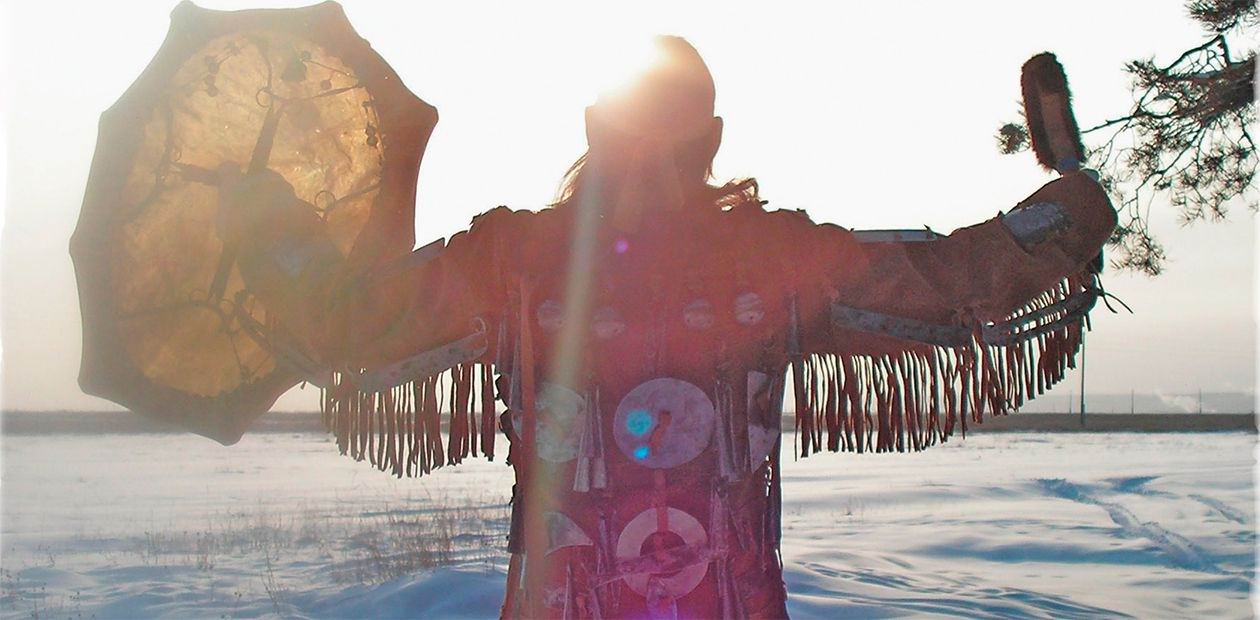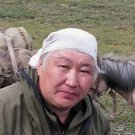Churima for a White Shaman
The shaman’s path does not come to an end when he passes away. The Evenks believe that after the death he goes to meet celestial residents – the light gods of aiyy. To ensure the meeting takes place, shaman’s relatives offer the gods deer, equip sledges, and erect a churima – the quarters of the deceased in the world of the dead
The shaman’s path does not come to an end when he passes away. The Evenks believe that after the death he goes to meet celestial residents – the light gods of aiyy. To ensure the meeting takes place, shaman’s relatives offer the gods deer, equip sledges, and erect a churima – the quarters of the deceased in the world of the dead
The Evenks is a low-number indigenous nationality of the North. They mostly live in the Sakha Republic (Yakutia), Khabarovsk Krai, and in the Magadan and Kamchatka Oblasts. There are 19,242 of them, according to the most recent population count.The Evenk language belongs to the Tungus-Manchu group of the Altai language family. In 1931, a Latin-based writing system was developed, and in 1936, a writing system based on the Russian alphabet. In the 1990s, the policy of the language and traditional culture revival was actively pursued.
The archaic name of the Evenks is the Tungus. Tungus tribes spread from the Cis-Baikal and Trans-Baikal areas all over East Siberia beginning with the 1st millennium A.D. As they settled, they assimilated a number of Yukagirs, and subsequently were themselves absorbed by the Yakuts.
Since meeting the Russians in the 17th c., the Evenks have been strongly influenced by them. The Evenks were among the most Christianized peoples of the North thanks to the active missionary policy conducted by the Orthodox Church. At the same time, they preserved traditional rituals and beliefs: hunting and fishing cults, worshipping the spirits-masters of nature, and shamanism.
The Evenks’ main traditional occupations are nomadic deer-breeding, hunting, and fishing.
From: (PEOPLES of RUSSIA project, www.narodru.ru)
In the traditional Evenk culture, burial rituals take a central place. Worshipping the dead and communicating with their souls derives from the far-away past.
The Evenks used to have two ways of burial: in the air and in the ground. The former meant that a dead body was placed on a labaz, a special platform mounted on poles. Bodies buried in the ground were put in boxes made out of cut wood. The air burial was considered more honorable; it was intended for shamans and clan elders.
In the process of Christianization, the former way gradually disappeared and the latter was critically altered. Burials turned into inhumations, i.e. putting a body in the ground, and followed the Orthodox ritual: the grave was arranged along the west-east line and a cross was erected. Nevertheless, some elements of the indigenous ritual remained.
One of them is a churima – a pyramid-shaped funeral structure of three or four poles. Resembling the skeleton of a chum, it symbolizes the dwelling of the deceased in the world of the dead.
In the old days, churimas were common for all Evenk groups regardless of the place of their residence; now you can only see it them far-away corners of the republic, where ancient tradition has remained intact.
The vision of a “white” shaman
An example of a combination of the Christian and Evenk funeral tradition can be G.P. Sleptsov’s burial in the settlement of Buor-Sysy, Moma usus, Yakutia. According to many residents of the settlement, he was a “white,” i.e. a healing, shaman.
They say that before dying Gavrila Petrovich told to his daughter that he saw two people leading sacrificial deer. He decided to play a practical joke on them and then reward them for the trouble. Knowing that it was her brother Nikolai and a friend of his who went to the cattle camp to fetch the deer, she decided to write down her father’s words in a notebook.
It came to light later that as the two friends were returning home, their snowmobiles suddenly died out though they were new and had worked faultlessly up to that moment. The friends struggled with them a few hours trying to start them but to no avail. Having decided to go on foot, Nikolai made a last attempt to start the snowmobile – and, all of a sudden, it worked as though it had never broken. Delighted, they carried on.
Soon they came across two elks – as though on purpose, the elks walked right to the middle of the road and stopped dead. Thinking that this was the prey sent by the shaman, they killed them both. As Nikolai said later, never in his life had he had such an easy hunt. He believed that his father gave them meat so that they could treat their relatives and all the people who would come to his funeral.
A cross under the churima
In accordance with the Christian ritual, an eight-pointed cross, with an upper cross-bar and a sidewise foot, was put at the foot of buried G.P. Sleptsov. Inside the fence, a churima – the traditional ritual structure – was erected, twice as high as the cross.
The funeral marker is made of poles. On top of it is a small structure of three logs, resembling an ancient on-the-ground burial.
To the west of the grave is a scaffold made out of larch poles, on which sacrificial deer lie. They are arranged in a prescribed order: the first is manchik, a deer that breaks the way in the deep snow for the deer following it; next is the riding deer uchakh, with its saddle and rein; the last is the deer that carries the dead man’s luggage to the underworld.
The luggage is put on another platform built to the north of the sacrificial scaffold. There, too, there are deer and the sledge of the deceased with all his things and everything a deer herder needs for travelling.
As a rule, the Evenks burn the clothes and personal belongings of the dead since they believe that no trace of him should be left after the funeral. At this burial, however, the shaman’s belongings are intact. This can be a specific feature of the Moma funeral ritual.
According to local residents, the shaman’s tambourine and the mallet are kept far away, in the mountains of Chersky ridge, in one of the barns that belonged to Sleptsov. One cannot touch, let alone use them.
Birds’ warning
The churima at Sleptsov’s grave is not the only one in the locality. To the north of the settlement is another similar structure, erected at the grave of an unknown “black” shaman. According to Gavrila Petrovich, this man was a bloodthirsty shaman, and Sleptsov even prohibited children to come close to his grave.
Inside the fence is an orthodox cross, this time six-pointed, with upper and lower cross-bars. The points of the cross are decorated with carvings.
The churima at this grave is as high as the cross. Attached to the ends of its poles are wooden figurines of birds, looking like duck calls local residents use in the spring to lure migrating birds. Gavrila Petrovich used to say that these birds serve as a warning that it is a prohibited area with no entry.
The funeral rituals of the Moma ulus accord Christian regulations and Evenks’ traditional beliefs; a cross and a churima get along inside the same fence. Symbols of different religions, they convey the same belief – the belief in eternal life.
After the funeral, the Evenks do not wear mourning or yield to long-lasting sorrow over the dead. And this attitude to death largely contributes to the survival of this small nomadic nationality in the harsh conditions of the Far North.
References
Istorija i kul’tura jevenov. SPb.: Izd-vo RAN. 1997. 182 s.
Krivoshapkin A. V. Jeveny. SPb.: Otd-nie izd-va «Prosveshhenie». 1997. 79 s.
Na grani mirov. Shamanizm narodov Sibiri. M: IPC «Hudozhnik i kniga». 2006. 296 s.
The photographs used in the publications are courtesy of the author
Material for this publication was collected with financial support from Global Greengrants Fund (USA), contract No. 53-479 dated August 4, 2009 and No. 54-169 dated February 2, 2010










